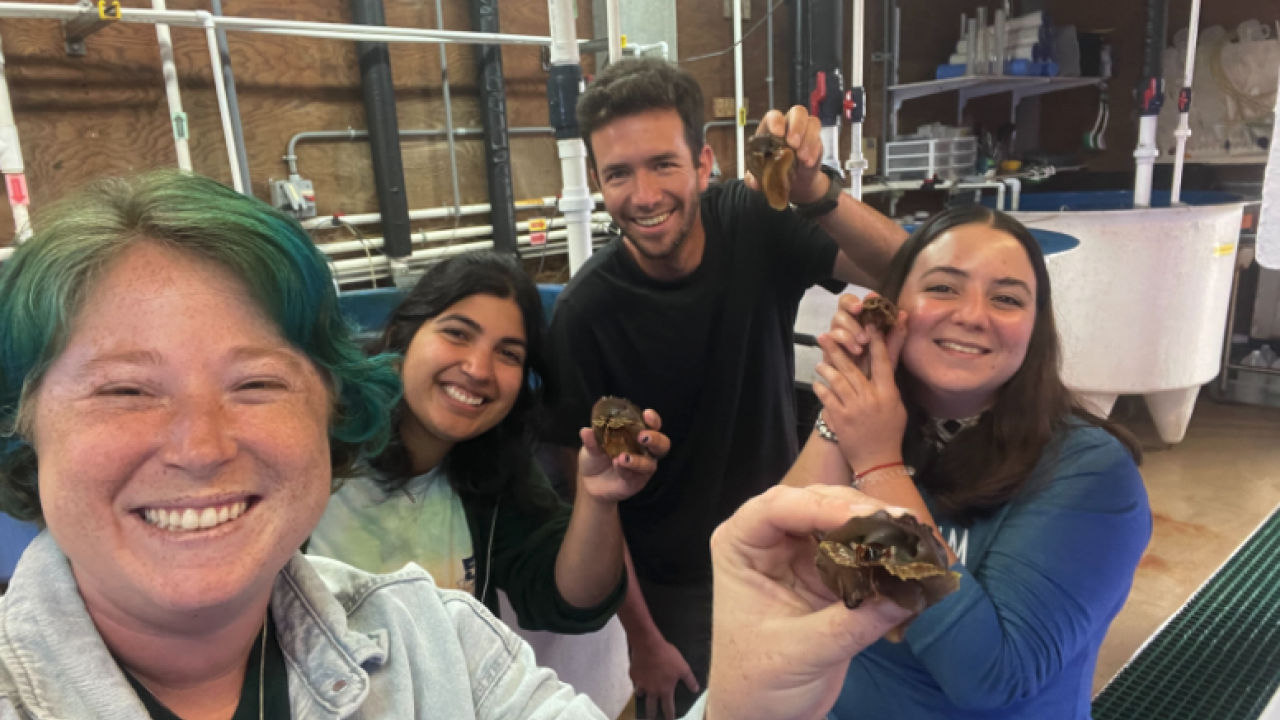
Working in the WAC Lab
A Santa Rosa Junior College - Bodega Marine Laboratory Internship Program Story
Driven by his interest in aquaculture and restoration ecology Ry has been taking biology classes at SRJC as he explores the possibility of applying to graduate school.
This summer I had the opportunity to work in the White Abalone Culture (WAC) Lab, under the guidance of Dr. Lauren Ashlock, who is a postdoctoral scholar for the lab. Through my experience I was able to learn about the primary goals and mission of the lab, gain experience with the day-to-day work of maintaining animals and experiments, and participate in research aimed at answering specific questions about how to increase white abalone breeding success and survival.
In 2001 white abalone were listed as an endangered species - and since 2011 the Bodega Marine Lab has been home to the White Abalone Captive Breeding Program, tasked with regrowing the dwindling populations of white abalone. The main function of the program is to grow animals that can be outplanted in the wild.
The primary animal care work I participated in was the cleaning and feeding of juvenile white abalone, as well as broodstock - the animals used each year to spawn the next group of juveniles. This allowed me to work closely with abalone ranging in size from that of a small dinner plate to less than a pin head. It was also during these times that I was able to work with different members of the WAC Lab, giving me a varied view of the many aspects of work that go into restoring an endangered species.
While considerable time and effort goes into caring for the animals currently in the lab, it is also critical that research is conducted to increase the production and survival of white abalone that will be bred in the future. One current question Lauren is working on is how temperature and diet may affect the production and survival of larval abalone. Currently, they are running experiments that will look at the effects of temperature as well as a diet supplemented with the lipid rich diatom, Navicula. For the temperature experiment, it is hypothesized that the abalone kept at higher temperature will have lower reproductive success. For the diet experiment, it is hypothesized that the lipid rich diet will lead to healthier eggs and therefore lower mortality rates of larval abalone.
At this time the experiment is ongoing so there are no results. However, as my schedule permits I hope to return to the lab throughout the fall to track progress of the experiment.
About the Program:
The SRJC-BML Internship Program provides summer research opportunities for Santa Rosa Junior College students at the Bodega Marine Laboratory.
